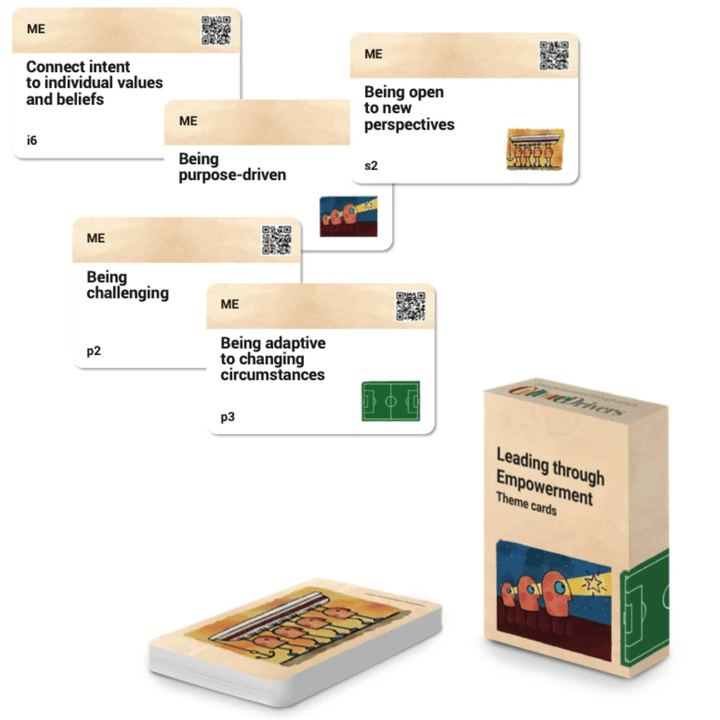
Leading through Intent
In an ideal world, executing strategy is easy
- First, you decide what outcomes are important.
- Then, you plan how to achieve those outcomes.
- And finally, you execute the plan by taking actions.
Easy, right? Wrong!

The challenges of friction
A range of factors makes strategy execution difficult: As human beings, we have all sorts of biases and personal interests that influence our actions.
Furthermore, when we operate within complex circumstances, emotions and stress contribute to the unpredictability of our behavior. If we also operate in complex environments where shared references are lacking, misunderstandings are likely to affect both our conversations and decisions.
When we add to this the challenge of operating in a changing environment, strategy execution becomes even more formidable.
Dealing with friction
The gaps and traps of strategy execution
The gaps
The traps
The Leading through Intent approach
Leading through Intent is based on a well proven fact: Most people want to make a positive difference in their work and are willing to invest all their skills and efforts if they get the opportunity.
Sadly, in most organizations, a lot of this human potential is wasted. Either because our processes have grown too complex and hard to relate to, or because people do not really feel psychologically safe and empowered.
Leading through Intent is designed to get more people involved in making decisions close to their work. The approach offers true empowerment by moving the responsibility to the people who do the work.
Working with the dynamics of autonomy and alignment
Autonomy and alignment are usually seen as opposites that we must choose between: Either we choose high alignment, or we choose high autonomy.
But there is a better way of addressing this.
Under the right circumstances, we can have high alignment and high autonomy at the same time. If this is achieved, everyone is working towards the same outcomes, while using the freedom their autonomy gives them to make independent decisions. This is what Leading through Intent is all about.
If all team members fully understand the intent (the what and the why), we can loosen up operational control, allowing team members to take responsibility for how things get done.
Request the Leading through Intent playbook
Are you ready to transform your strategy execution?
Unlock your team's full potential with our "Leading through Intent" playbook. Created with Stephen Bungay, author of The Art of Action, it’s based on a simple truth: people want to make a positive impact, but organizations often hinder them with complexity and lack of empowerment.
This framework empowers those closest to the work, fostering ownership, psychological safety, and strategic alignment. Equip your team to go beyond compliance and drive real success.
Get started with "Leading through Intent" today!
Name *Email *CompanySign up *I agree to the terms and conditions and the privacy policy. Your information will be handled responsibly and with respect for your privacy. You can withdraw your consent at any time.The TARGIT case

Becoming intent driven high performers in only one year
Read the story of how TARGIT, a leading business intelligence Software as a Service company, moved from below average to high performance on both team collaboration and leadership quality in only one year.
And more importantly: How they became an intent driven organization with a high degree of autonomy, involvement and strategy alignment.
Learn from the master
Stephen Bungay
The foremost global expert in "Leading through Intent" is Stephen Bungay, author of the renowned book "The Art of Action".
Over several years CultureDrivers has worked closely with Stephen Bungay to turn Bungay's theories and practices into processes, well proven templates and digital tools that can be scaled out broadly in large organizations.
You can inquire about Stephen Bungay´s availability via info@culturedrivers.com

Leadership dilemmas
Leading through Intent involves a lot of dilemmas where you as a team need to make trade-offs between conflicting interests.
We have developed a range of team and leadership dilemmas that helps turn the theory into practice.

Feedback Tools
The Leading through Intent toolbox also includes a TeamDrivers and a 360 corresponding with the framework.
Feedback from different respondents are reported for Intent, Support and Playfield seperately and helps identify the areas where behavioural change would be most valuable.

Change Cards
Becoming great at working with the Leading through Intent practices often involves a need to adjust some of the existing colaboration habits.
For this purpose the team change cards can work as a valuable tool.
The Leader responsibilities
Learn more about the leaders responsibilities when Leading through Intent
Keep everyone focused on the intent
Support the team to grow and thrive
Create a strong playfield
info@culturedrivers.com
Incorporated in Denmark: DK VAT 37934178
CultureDrivers © 2024 all rights reserved






